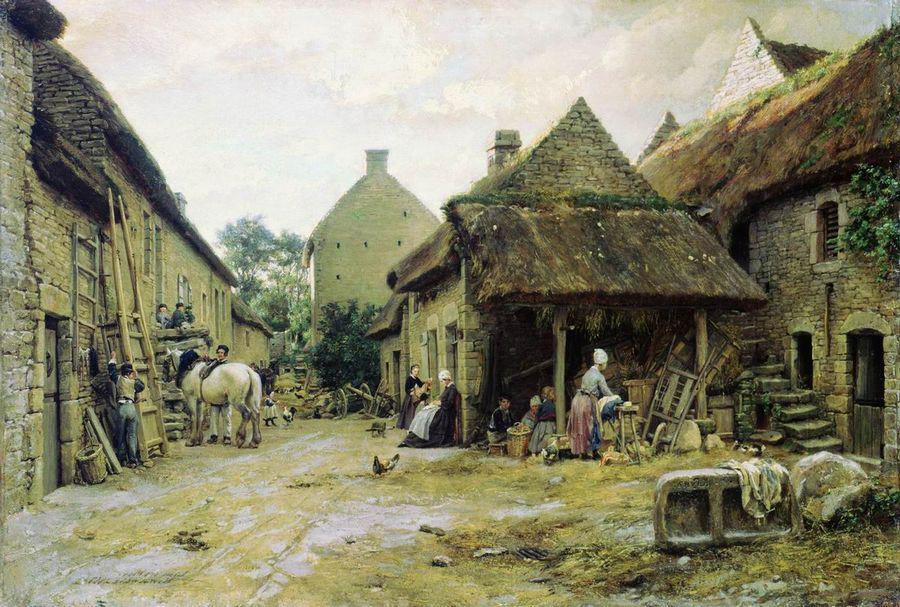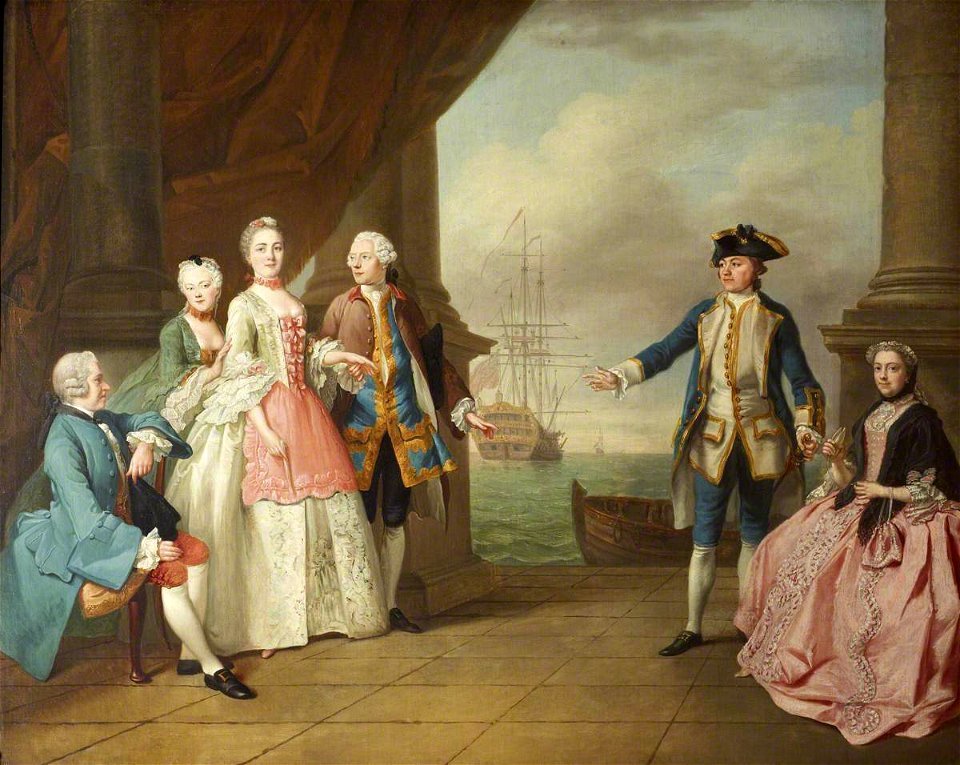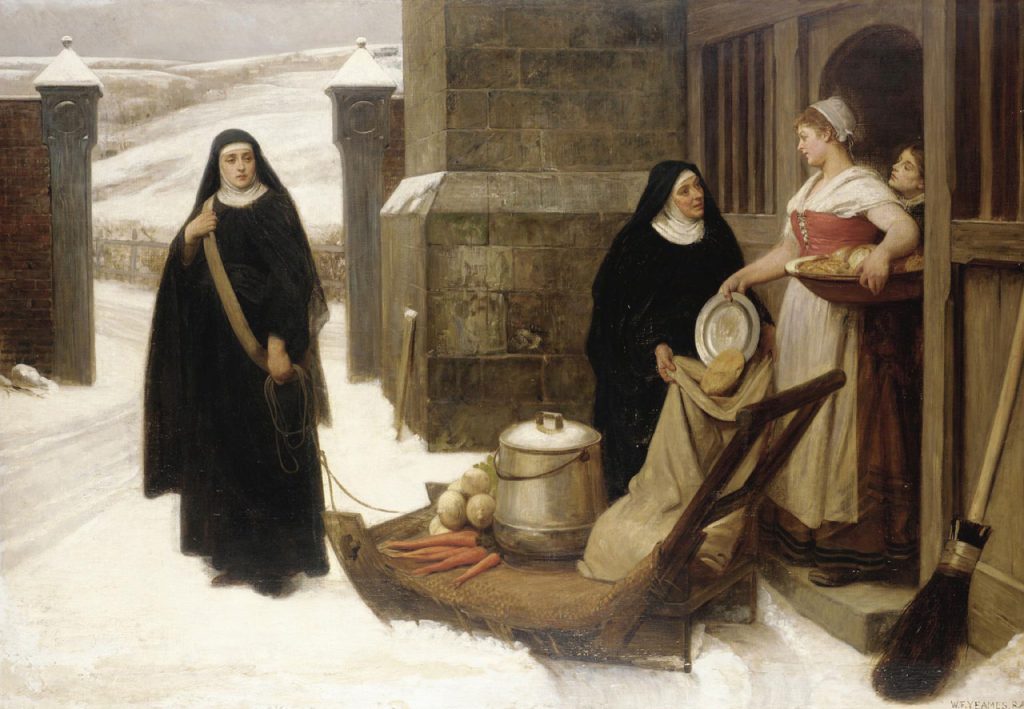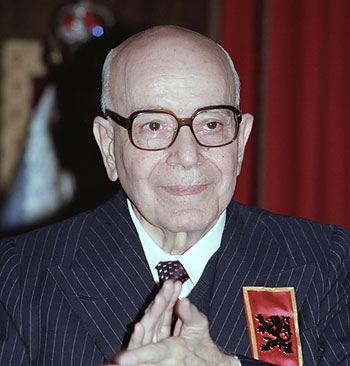by Plinio Corrêa de Oliveira
Preferential option for the nobility. At first glance this expression may startle readers familiar with the more common phrase often used Pope John Paul II: “preferential option for the poor.” Nevertheless, what inspires this book is precisely a preferential option for the nobility.

The famous Saint-Cyr boarding house that the Marquise of Maintenon, morganatic wife of Louis XIV, founded to help the numerous young ladies of the aristocracy whose parents had become impoverished.
The objection may be raised that, ex natura rerum, at least a noble is wealthy, well-connected, and socially prominent. Accordingly, he possesses manifold means to deliver himself from any situation of penury into which he may fall. The preferential option already exercised on his behalf by Providence gives him everything he would need to rise again.
The case of a poor man is precisely the opposite. He has no social standing and no useful connections, and he often lacks the means to remedy his privations. Therefore, a preferential option to help him take care of his basic necessities may be mandated by justice.
 In this light, a preferential option for the nobility seems almost an affront to the poor.
In this light, a preferential option for the nobility seems almost an affront to the poor.
In reality, however, the antithesis between the nobility and the poor is becoming an anachronism, since poverty besets an ever larger number of nobles, as Pope Pius XII observes in his allocutions to the Roman Patriciate and Nobility. Moreover, the situation of an impoverished noble is more poignant than that of a poor man in the street.
The poor man, by his very wretchedness, can and should awaken his neighbor’s sense of justice as well as his generosity. The nobleman, on the other hand, by virtue of his nobility, has reasons to avoid requesting aid. He even prefers to conceal his name and origins when he can no longer conceal his poverty. This is what the expressive language of old termed “nobility in embarrassed circumstances.”

Painting of The Hon. Mrs Constantine Phipps being led to greet her Brother, Captain the Hon.Augustus Hervey, later 3rd Earl of Bristol. Painting by Jean-Étienne Liotard.
Efforts to relieve the distress of such nobles—and of all impoverished people regardless of their social status—merited the encomium of the ancients. Christian charity discovered a thousand ingenious ways to alleviate the plight of impoverished nobles without compromising their dignity.1
However, the materially destitute are not alone in deserving a preferential option. Such an option should also benefit people in positions that entail particularly arduous duties whose fulfillment edifies the social body and whose neglect scandalizes it. Members of the contemporary nobility are often in this category, as the present work will show.2

For the Poor (c 1875), two nuns collecting food to help feed the poor during a bitter winter. Painting by William Frederick Yeames.
The preferential option for the nobility and the preferential option for the poor are by no means mutually exclusive. Nor are they in opposition to one another. Pope John Paul II reminds us: “Yes, the Church takes upon herself the preferential option for the poor. It is, to be sure, an option of preference and not, therefore, an exclusive or excluding option, since the message of salvation is destined for all.”3
Indeed, these options are complementary ways of manifesting the justice and charity that go hand in hand in the service of the same Lord Jesus Christ, Who is the model both for the nobles and the poor, as the Roman Pontiffs emphatically proclaim.4
May these words serve as clarification for those who, motivated by the spirit of class struggle—at present in evident decline—cling to the discarded notion that constant conflict between the nobility and the poor is inevitable. This false concept led many to interpret the preferential option of John Paul II as an exclusive preference. Such a passionate and factional interpretation lacks all objectivity. One’s preferences may fall simultaneously on several objects with differing degrees of intensity. A preference for one in no sense demands the exclusion of the others.
(Author’s introduction to Nobility and Analogous Traditional Elites in the Allocutions of Pius XII: A Theme Illuminating American Social History)
1 See Documents III.
2 See Chapter I, 1 and 3; Chapter II, 1; Chapter IV, 9 and 10; and Chapter VII, 8.
3 “Ad Patres Cardinales et Curiae Pontificalisque Domus Prelatos, imminente Nativate Domini coram admissos,” December 21, 1984, Acta Apostolicae Sedis (Typis Polyglottis Vaticanis, 1985), Vol. 77, no. 5, p. 511.
4 See Chapter IV, 8; Chapter V, 6; and Documents IV.










